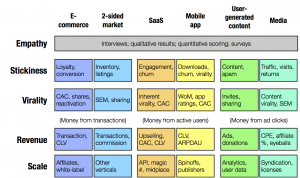It’s the time of the year where we either make you a hero or we make you hate me a little more. As stated in the previous comments, this could very well be The List of People That David Crow Wants to Be Associated With (but I think I established that is a different list). Either way, the commenter is correct, the list is something and it is highly suspect and by no means complete. If you don’t like the list, leave a comment. If you think I left genuinely left someone off, leave a comment (ps suggesting yourself, either demonstrates your overly inflated ego or you might not realize that your suggestion by itself if a reason to be left of the list). I’m open to being corrected and having the list added to.
Past issues of the list include 2011 and 2012.
For 2013, the list is divided between those we expect to break out (Breaking Glass). And those that are taking it to the next level (Going Big). Basically, you will be hearing from or about these people over the next 12 months. So everyone get in a circle, it’s time for the 2013 instalment of the Hot Shit List.
Hot Sh!t List 2013
Breaking Glass
- Steve Lake

 , Thalmic Labs
, Thalmic Labs  , Aaron Grant
, Aaron Grant 
 and Matthew Bailey
and Matthew Bailey  , Thalmic Labs
, Thalmic Labs 
- Heather Payne

 , Ladies Learning Code/HackerYou
, Ladies Learning Code/HackerYou 
- Zak Homuth

 , Upverter
, Upverter 
- Wojciech Gryc

 , Canopy Labs
, Canopy Labs 
- Janice Diner

 , Catalysta
, Catalysta - Karl Martin

 and Foteini Agrafioti
and Foteini Agrafioti  , Bionym
, Bionym 
- Ben Zifkin

 , Hubba
, Hubba 
- Mark Ury

 , Storybird
, Storybird 
- Matthew Harris

 and Brad Van Vugt
and Brad Van Vugt 
 , Send With Us
, Send With Us 
- David Alston

 , IntroHive
, IntroHive 
- John Boxall

 , Mobify
, Mobify 
- Katherine Hague

 , ShopLocket
, ShopLocket 
- Rob Ellis

 and Brock Whittens
and Brock Whittens 
 , Harp.io
, Harp.io 
- Ozge Yeloglu

 ,Toplog
,Toplog 
- Trevor Orsztynowicz

 , Caliper.io
, Caliper.io 
- Ariel Garten

 , InteraXon
, InteraXon 
- Frank Falcone

 , TriggerFox
, TriggerFox 
- Andrew Sider

 , Bunch
, Bunch 
- Sreejata Chatterjee

 , Leadsift
, Leadsift 
- Dan Holowack

 , CrowdRiff
, CrowdRiff 
- Adrian Bentley
 , AnalyzeRE
, AnalyzeRE 
- Lisa Zhang

 , PolyChart
, PolyChart 
- Sam Pasupalak

 , Maluuba
, Maluuba 
- Malgosia Green

 , Top Hat Monocle
, Top Hat Monocle 
- Narayan Sainaney

 , Moj.io
, Moj.io 
- Matt Rendall

 , Clearpath Robotics
, Clearpath Robotics 
- Jacqui Murphy

 , Fongo
, Fongo 
- David Quail

 , Zenlike
, Zenlike 
- Dan Robichaud

 , PasswordBox
, PasswordBox 
- Josh Sookman

 , Guardly
, Guardly 
- Vlad Berteanu

 , Octav Druta
, Octav Druta 
 and Andrei Soare
and Andrei Soare 
 , TalentBuddy
, TalentBuddy - Carl Mercier

 , HipYard
, HipYard
Going Big
- Tobi Lutke

 and Harley Finkelstein
and Harley Finkelstein 
 , Shopify
, Shopify 
- Ryan Holmes

 , Hootsuite
, Hootsuite 
- Ethan Song

 and Hicham Ratnani
and Hicham Ratnani 
 , Frank and Oak
, Frank and Oak 
- Wilkins Chung
 , Kenshi Akashi
, Kenshi Akashi 
 and Eric Diep
and Eric Diep 
 , A Thinking Ape
, A Thinking Ape 
- Ted Livingston

 , Kik
, Kik 
- Amar Varma

 , Xtreme Labs
, Xtreme Labs 
- John Baker

 , Desire2Learn
, Desire2Learn 
- Rick Segal

 , Fixmo
, Fixmo 
- Mike Silagadze

 , Top Hat Monocle
, Top Hat Monocle 
- Chris Sukornyk

 , Chango
, Chango 
- Carol Leaman

 , Axonify
, Axonify 
- Dax Dasilva

 , LightSpeed
, LightSpeed 
- Kyle Vucko

 , Indochino
, Indochino 
- Mark Organ

 , Influitive
, Influitive 
- Oleg Gustol

 , 500px
, 500px 
- Mike McDerment

 and Mark MacLeod
and Mark MacLeod 
 , Freshbooks
, Freshbooks 
- Ben Baldwin

 , ClearFit
, ClearFit 
- Allen Lau

 and Ivan Yuen
and Ivan Yuen 
 , Wattpad
, Wattpad 
- Kirk Simpson

 and James Lochrie
and James Lochrie 
 , Wave Accounting
, Wave Accounting 
- Noah Godfrey

 and Pema Hagen
and Pema Hagen 
 , Checkout51
, Checkout51 
- Mike Litt

 and Devon Galloway
and Devon Galloway 
 , Vidyard
, Vidyard 
- Dan Martell

 , Clarity Inc.
, Clarity Inc. 
- Joseph Fung

 , TribeHR
, TribeHR 
- Jamie Shulman

 and Jamie McDonald
and Jamie McDonald 
 , HubDoc
, HubDoc 
- Jason Bailey

 , East Side Games
, East Side Games 
- Albert Lai

 , Big Viking Games
, Big Viking Games 
- Derek Ting
 , Enflick
, Enflick 
- Chris Ye

 , Uken Games
, Uken Games 
- Ken Seto
 ,
,  and Garry Seto
and Garry Seto  ,
,  , Massive Damage
, Massive Damage 
- Rick Perreault

 , Unbounce
, Unbounce 
- Jeff Shiner
 and Roustem Karimov
and Roustem Karimov  , AgileBits
, AgileBits 
- Yona Shtern

 , Beyond The Rack
, Beyond The Rack 
- Jack Newton
 and Rian Gauvreau
and Rian Gauvreau  , Clio
, Clio 
The icons are courtesy of Anil Zaimi, though I haven’t spent the necessary time to make this work with our stylesheet and theme in WordPress.










